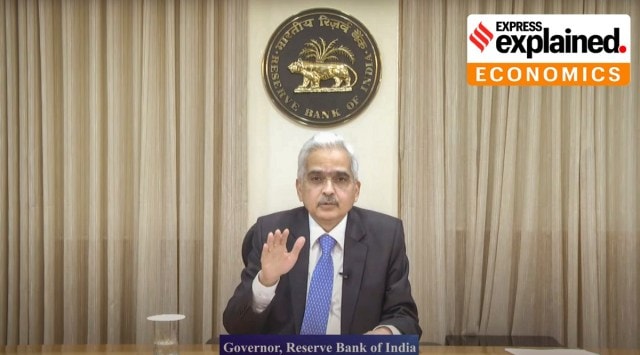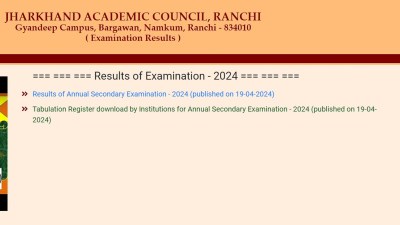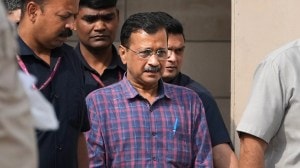- India
- International
Explained: The RBI’s latest round of rate hike, and how it will impact your loan EMIs
RBI Repo Rate Hiked: Inflation has peaked and is expected to soften — but there are a range of global challenges to negotiate. Monetary policy has to, therefore, act, Governor Shaktikanta Das said
 RBI Monetary Policy, Repo Rate Hike: Reserve Bank of India Governor Shaktikanta Das digitally delivers a statement, in Mumbai, Friday, Aug. 5, 2022. (PTI Photo)
RBI Monetary Policy, Repo Rate Hike: Reserve Bank of India Governor Shaktikanta Das digitally delivers a statement, in Mumbai, Friday, Aug. 5, 2022. (PTI Photo)With an eye on inflation amid the prevailing global uncertainties, the Reserve Bank of India (RBI) announced a 50 basis point hike in the repo rates — the rate at which RBI lends to commercial banks — thereby taking the cumulative rate hike over the last three months to 140 basis points. Here is why RBI has continued with its aggressive stance, and the impact it could have on borrowers.
Why the 50 basis point hike?
As it decided to go for a second 50 basis point hike within two months, elevated levels of inflation remained the key concern for RBI’s monetary policy committee (MPC).
“With inflation expected to remain above the upper threshold in Q2 and Q3, the MPC stressed that sustained high inflation could destabilise inflation expectations and harm growth in the medium term. The MPC, therefore, judged that further calibrated withdrawal of monetary accommodation is warranted to keep inflation expectations anchored and contain the second-round effects. Accordingly, the MPC decided to increase the policy repo rate by 50 basis points to 5.4 per cent,” RBI said in its MPC statement.
Even as the consumer price inflation has eased from its surge in April, the MPC noted that it remains uncomfortably high and above the upper threshold of the target. “Inflationary pressures are broad-based and core inflation remains at elevated levels. The volatility in global financial markets is impinging upon domestic financial markets, including the currency market, thereby leading to imported inflation,” it said.
Why is RBI not drawing comfort from softening inflation?
Even as RBI Governor Shaktikanta Das stated that CPI inflation has peaked and RBI has projected inflation to soften and come down to 5 per cent in Q1 FY23, RBI went ahead with a 50-basis point hike as it said that currently inflation remains at unacceptable levels and global uncertainties prevail.

The MPC feels that there are global challenges on the front of inflationary surges, tightening of financial conditions, sharp appreciation of the US dollar, and lower growth across geographies, and hence, monetary policy has to act.
“Inflation still remains at 7 per cent and at unacceptably high levels. So with that kind of trajectory monetary policy has to act…. There are several uncertainties that are clouding the outlook, so monetary policy has to be there and therefore the action of 50 bps,” Das said.
Experts said that RBI would have wanted to stay on course to overcome the prevailing challenges. “RBI’s actions and efforts are to largely surmount the global headwinds that are driving inflation and to ensure inflation remains within target going forward,” said Sanjay Palve, Senior Managing Director, Essar Capital. The MPC’s actions are in line with the current global inflation scenario and has leaned in favour of anchoring inflationary expectations to work out solutions to free the growth potential of the economy, he said.
RBI rate hike: How will it impact borrowers and depositors?
This is set to further hit existing home loan customers and prospective borrowers, as it will result in a hike in lending rates.
At the same time, conservative investors who like to park their funds in bank fixed deposits, will benefit as banks are expected to raise their deposit rates following the rate hike. The deposit rate hike, however, will also be dependent upon the credit demand in the economy and the need for banks to raise additional funds.
Banks and housing finance companies have already raised their lending rates between 70 to 90 basis points following the 90 basis point hike in repo rate by RBI in May and June. Now banks and HFCs are expected to raise the rates again.
Following the 140 basis point hike in the repo rate over the last three months, if the lending rates were to rise by 150 basis points, it will have a significant impact on EMIs. For example, if the rate on your home loan goes up by 150 basis points from 7 per cent in April to 8.5 per cent, the EMI on principal outstanding of Rs 50 lakh for 15 years will go up from Rs 44,941 to Rs 49,236 — a jump of Rs 4,295 in monthly EMIs if the tenure is kept constant. However, if the rates were to rise by 200 basis point by the end of the year (which is expected given RBI’s enhanced concerns around inflation), the customer would see her loan rate going up from around 7 per cent now to 9 per cent. In that case the EMI for the same loan would jump to Rs 50,713 — an increase of Rs 5,771 per month.
Will there be more rate hikes?
RBI has projected an inflation of 6.7 per cent for the year 2022-23 and has said that the inflation will come down to 5 per cent in Q1FY23. It has, however, said that its future actions would depend upon the evolving situation. Given its enhanced concerns around inflation, market participants feel that the central bank may go for additional rate hikes of 50-60 basis points over the remaining part of the year.
In its statement, the RBI said, “The MPC also decided to remain focused on withdrawal of accommodation to ensure that inflation remains within the target going forward, while supporting growth.”
A report released by Bank of Baroda after the RBI’s rate hike announcement said, “Given that RBI expects inflation to remain above its upper target of 6% in the next two quarters, we expect another 50bps rate hike in the current cycle.”
What is the view on growth?
Even as there are concerns over global growth and risks of recession in some developed economies, Das said, “In an ocean of high turbulence and uncertainty, Indian economy is an island of macro-economic and financial stability and the economic growth is resilient.” The RBI retained its GDP growth forecast of 7.2 per cent for the current financial year and has projected it to grow by 6.7 per cent for Q1FY23.
While indicators such as production of consumer durables, domestic air passenger traffic and sale of passenger vehicles suggest improvement in urban demand, the RBI said that urban consumption will benefit from the demand for contact-intensive services, better performance of corporates, and improving consumer optimism. “The increase in capacity utilisation, government’s capex push and large expansion in bank credit should support investment activity,” the RBI said.
As high frequency indicators of the services sector like railway freight traffic, port freight traffic, e-way bills, toll collections and commercial vehicle sales remained robust in June and July, RBI said that investment activity has been picking up. While PMI manufacturing rose to an 8-month high in July, PMI services indicated continued expansion last month.
“Capacity utilisation in the manufacturing sector is now above its long-run average, signalling the need for fresh investment activity in additional capacity creation,” said RBI in its statement.
What is the view on liquidity?
As a result of the repo rate hike of 50bps, the standing deposit facility rate now stands at 5.15 per cent and cumulatively, it has been raised by 180 basis points in FY23 . While the hikes in SDF rate has led to a gradual decline in systemic liquidity, the report by Bank of Baroda said that the deposit rates have also firmed up and that will improve the availability of funds with banks, amidst a pickup in credit. “To maintain adequate liquidity in the system, RBI will conduct two-way fine tuning operations in the form of Variable Rate Repo (VRR) and Variable Rate Reverse Repo (VRRR) operations of different maturities,” the report said.
More Explained
EXPRESS OPINION
Apr 19: Latest News
- 01
- 02
- 03
- 04
- 05








































